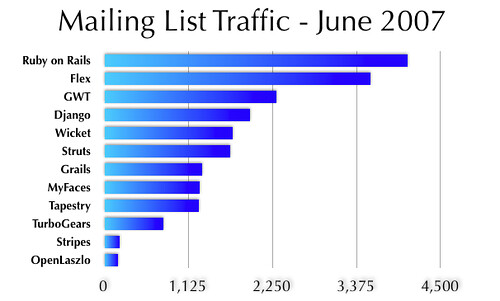Want a kick-ass Java/UI Engineering Job in Mountain View?
The last month working at LinkedIn has been an absolute blast. I'm new to the whole "treating developers like royalty" thing, so that's taken a while to get used to. It's definitely nice, especially when the company gives you ownership of the things you're working on. Sure, there's schedules and priorities, but it seems like each and every engineer has control of their own destiny. As a consultant, I've been very impressed with the way I've been embraced and folded into the team like a regular employee. There's lots of team lunches, a tech meetup every now and then, and I even played hoops with a bunch of guys last night. This is probably the coolest company I've ever worked for.
Wanna have fun like I am? LinkedIn is looking to hire quite aggressively over the next several months. There's new faces almost every week and hopefully I can "hook you up" to be a part of the festivities. Below is a position that we're currently hiring for in the UI Engineering team. Working remotely is not an option at this time, you need to live in (or relocate to) the Bay Area.
LinkedIn is developing the UI infrastructure for our next generation applications. This is a strategic initiative that will enable LinkedIn to develop highly interactive and intuitive applications leveraging the latest Web UI technologies. We are looking for a world-class software engineer to work on this critical component of our infrastructure, in partnership with one or more technical leads, the engineering and the product team.
POSITION REQUIREMENTS:
- EXPERIENCE:
- 3+ years of overall professional work experience
-
SKILLS & ABILITIES:
- In depth and hands on knowledge of Java, the J2EE platform and experience working with relevant tools (IDEs, ant, junit, etc.)
- A passion for UI frameworks: JSF and Facelets experience preferable.
- In depth knowledge of JSP, JSTL.
- Experience with Ajax.
- Experience with portal technologies.
- I18n experience a plus.
- Solid understanding of design, coding and testing patterns
- Ability to work in a fast paced, test-driven collaborative and iterative programming environment
- Ability to effectively interact with product managers and other organizational units such as QA and CS
- Excellent communication skills
-
EDUCATION:
- B.S./M.S in Computer Science or equivalent experience.
I don't know if JSF and Facelets experience is still a requirement (now that I'm here  ), but a passion for UI frameworks and web development is. You should know at least two leading Java frameworks and have a lot of experiencing with testing web applications out-of-container. We're not looking for Java Developers turned web developers, we're more looking for Web Developers that know Java.
), but a passion for UI frameworks and web development is. You should know at least two leading Java frameworks and have a lot of experiencing with testing web applications out-of-container. We're not looking for Java Developers turned web developers, we're more looking for Web Developers that know Java.
If this sounds interesting to you, shoot me your resume in an e-mail. Don't forget to include a link to your LinkedIn Profile.


